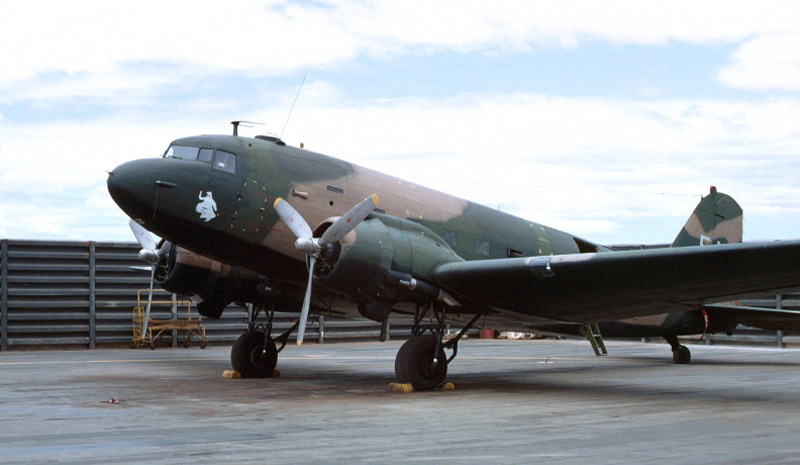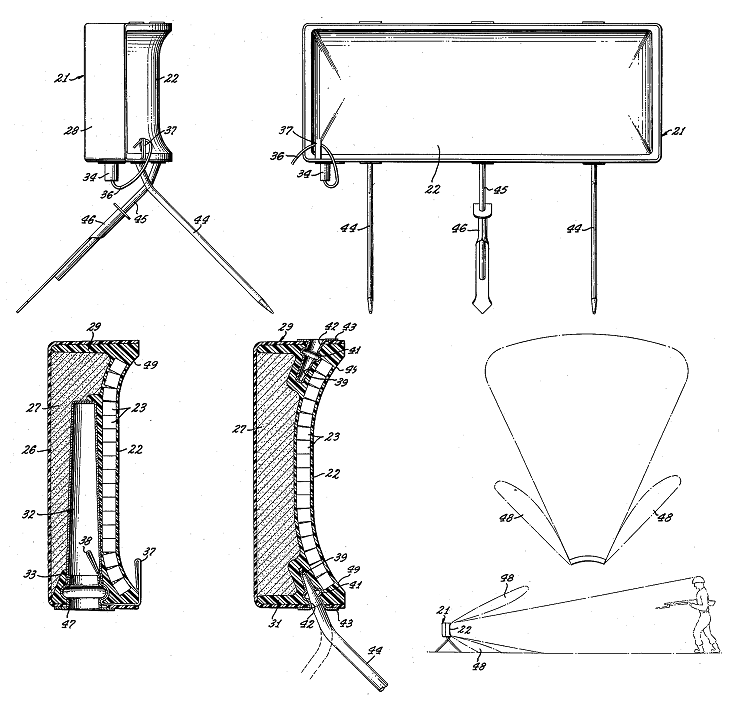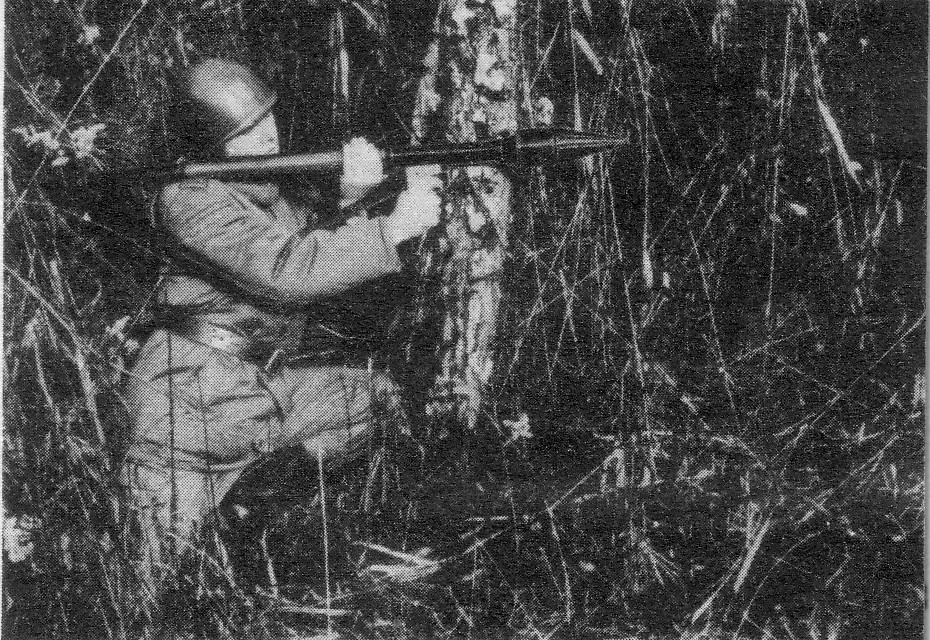|
Landing Zone Brace
Landing Zone Brace (also known as LZ Brace) is a former U.S. Army landing zone west of Kontum in the Central Highlands of Vietnam. History The landing zone was established during Operation Wayne Grey an operation against the People's Army of Vietnam (PAVN) 24th and 66th Regiments in the Plei Trap Valley. and was located approximately 44 km west of Kontum. Battle timeline ;2 March On 2 March 1969, A, B & D Companies, 3rd Battalion, 8th Infantry Regiment left their staging area at Polei Kleng Camp and were transported to their insertion point at YA793879 (). The insertion and the subsequent establishment of a perimeter was without incident. A Company swept north-east and established a night position at YA793879. B Company went south and D Company pushed into the centre of the area of operations. ;3 March On 3 March, A Company continued reconnaissance and was to establish a night defensive position at YA812884 (). Upon arriving at the location Company A established a perimet ... [...More Info...] [...Related Items...] OR: [Wikipedia] [Google] [Baidu] |
People's Army Of Vietnam
The People's Army of Vietnam (PAVN; vi, Quân đội nhân dân Việt Nam, QĐNDVN), also recognized as the Vietnam People's Army (VPA) or the Vietnamese Army (), is the military force of the Vietnam, Socialist Republic of Vietnam and the armed wing of the ruling Communist Party of Vietnam. The PAVN is a part of the Vietnam People's Armed Forces and includes: Ground Force, Vietnam People's Navy, Navy, Vietnam People's Air Force, Air Force, Vietnam Border Guard, Border Guard and Vietnam Coast Guard, Coast Guard. However, Vietnam does not have a separate Ground Force or Army branch. All ground troops, army corps, military districts and specialised arms belong to the Ministry of Defence (Vietnam), Ministry of Defence, directly under the command of the Central Military Commission (Vietnam), Central Military Commission, the Minister of Defence (Vietnam), Minister of Defence, and the General Staff of the Vietnam People's Army. The military flag of the PAVN is the flag of the Socia ... [...More Info...] [...Related Items...] OR: [Wikipedia] [Google] [Baidu] |
Private First Class
Private first class (french: Soldat de 1 classe; es, Soldado de primera) is a military rank held by junior enlisted personnel in a number of armed forces. French speaking countries In France and other French speaking countries, the rank (; ) is used. Poland In Poland, the rank is called (). Singapore Introduced in 1983, the honorific rank is awarded to hardworking conscript citizen-soldiers who performed well in their National Service term. Private First Class (PFC) wear a rank insignia of a single chevron pointing down. The Private First Class (PFC) rank is rarely awarded nowadays by the Singapore Armed Forces. All private enlistees can be promoted directly to Lance Corporal (LCP) should they meet the minimum qualifying requirements, conduct appraisal and work performance. United States United States Army In the United States Army, recruits usually enter service as a private in pay grade E-1. Private (E-2), designated by a single chevron, is typically an automatic ... [...More Info...] [...Related Items...] OR: [Wikipedia] [Google] [Baidu] |
Non-commissioned Officer
A non-commissioned officer (NCO) is a military officer who has not pursued a commission. Non-commissioned officers usually earn their position of authority by promotion through the enlisted ranks. (Non-officers, which includes most or all enlisted personnel, are of lower rank than any officer.) In contrast, commissioned officers usually enter directly from a military academy, officer candidate school (OCS), or officer training school (OTS) after receiving a post-secondary degree. The NCO corps usually includes many grades of enlisted, corporal and sergeant; in some countries, warrant officers also carry out the duties of NCOs. The naval equivalent includes some or all grades of petty officer. There are different classes of non-commissioned officers, including junior (lower ranked) non-commissioned officers (JNCO) and senior/staff (higher ranked) non-commissioned officers (SNCO). Function The non-commissioned officer corps has been referred to as "the backbone" of the armed se ... [...More Info...] [...Related Items...] OR: [Wikipedia] [Google] [Baidu] |
AN/PRC-77 Portable Transceiver
AN/PRC 77 Radio Set is a manpack, portable VHF FM combat-net radio transceiver manufactured by Associated Industries Manufacturer's website. and used to provide short-range, two-way voice communication. In the Joint Electronics Type Designation System (JETDS), AN/PRC translates to "Army/Navy, Portable, Radio, Communication." History The AN/PRC-77 entered service in 1968 during the Vietnam War as an upgrade to the earlier AN/PRC-25. It differs from its predecessor mai ...[...More Info...] [...Related Items...] OR: [Wikipedia] [Google] [Baidu] |
Battalion
A battalion is a military unit, typically consisting of 300 to 1,200 soldiers commanded by a lieutenant colonel, and subdivided into a number of companies (usually each commanded by a major or a captain). In some countries, battalions are exclusively infantry, while in others battalions are unit-level organizations. The word battalion came into the English language in the 16th century from the French language ( French: ''bataillon'' meaning "battle squadron"; Italian: ''battaglione'' meaning the same thing; derived from the Vulgar Latin word ''battalia'' meaning "battle" and from the Latin word ''bauttere'' meaning "to beat" or "to strike"). The first use of the word in English was in the 1580s. Description A battalion comprises two or more primary mission companies which are often of a common type (e.g., infantry, tank, or maintenance), although there are exceptions such as combined arms battalions in the U.S. Army. In addition to the primary mission companies, a battal ... [...More Info...] [...Related Items...] OR: [Wikipedia] [Google] [Baidu] |
Medical Evac Of PFC
Medicine is the science and practice of caring for a patient, managing the diagnosis, prognosis, prevention, treatment, palliation of their injury or disease, and promoting their health. Medicine encompasses a variety of health care practices evolved to maintain and restore health by the prevention and treatment of illness. Contemporary medicine applies biomedical sciences, biomedical research, genetics, and medical technology to diagnose, treat, and prevent injury and disease, typically through pharmaceuticals or surgery, but also through therapies as diverse as psychotherapy, external splints and traction, medical devices, biologics, and ionizing radiation, amongst others. Medicine has been practiced since prehistoric times, and for most of this time it was an art (an area of skill and knowledge), frequently having connections to the religious and philosophical beliefs of local culture. For example, a medicine man would apply herbs and say prayers for healing, or an ancie ... [...More Info...] [...Related Items...] OR: [Wikipedia] [Google] [Baidu] |
12th Infantry Regiment (United States)
The 12th Infantry Regiment is a unit of the United States Army. The 12th Infantry has fought in seven wars from the Civil War to the Global War on Terrorism and has been awarded 19 Presidential Unit Citations, five Valorous Unit Awards, a Joint Meritorious Unit Award, two citations in the Order of the Day of the Belgian Army, Nine Republic of Vietnam Crosses of Gallantry, the Republic of Vietnam Civil Action Honor Medal Third Class, a Meritorious Unit Commendation, and the Belgian Fourragere. History Civil War Less than a month after the first shots of the Civil War were fired at Fort Sumter in South Carolina, the 12th Infantry Regiment was constituted 3 May 1861 in the Regular Army as the 1st Battalion, 12th Infantry. It was organized 20 October 1861 at Fort Hamilton in New York. The battalion saw extensive combat during the Civil War, participating in twelve campaigns with the Army of the Potomac. During the Peninsula Campaign, the 12th Infantry distinguished itself in ... [...More Info...] [...Related Items...] OR: [Wikipedia] [Google] [Baidu] |
Hill 947
A hill is a landform that extends above the surrounding terrain. It often has a distinct summit. Terminology The distinction between a hill and a mountain is unclear and largely subjective, but a hill is universally considered to be not as tall, or as steep as a mountain. Geographers historically regarded mountains as hills greater than above sea level, which formed the basis of the plot of the 1995 film ''The Englishman who Went up a Hill but Came down a Mountain''. In contrast, hillwalkers have tended to regard mountains as peaks above sea level. The '' Oxford English Dictionary'' also suggests a limit of and Whittow states "Some authorities regard eminences above as mountains, those below being referred to as hills." Today, a mountain is usually defined in the UK and Ireland as any summit at least high, while the official UK government's definition of a mountain is a summit of or higher. Some definitions include a topographical prominence requirement, typically ... [...More Info...] [...Related Items...] OR: [Wikipedia] [Google] [Baidu] |
Douglas AC-47 Spooky
The Douglas AC-47 Spooky (also nicknamed "Puff, the Magic Dragon") was the first in a series of fixed-wing gunships developed by the United States Air Force during the Vietnam War. It was designed to provide more firepower than light and medium ground-attack aircraft in certain situations when ground forces called for close air support. Design and development The AC-47 was a United States Air Force (USAF) C-47, (the military version of the DC-3) that had been modified by mounting three 7.62 mm General Electric miniguns to fire through two rear window openings and the side cargo door, all on the left (pilot's) side of the aircraft, to provide close air support for ground troops. Other armament configurations could also be found on similar C-47-based aircraft around the world. The guns were actuated by a control on the pilot's yoke whereby he could control the guns either individually or together, although gunners were also among the crew to assist with gun failures and si ... [...More Info...] [...Related Items...] OR: [Wikipedia] [Google] [Baidu] |
Tear Gas
Tear gas, also known as a lachrymator agent or lachrymator (), sometimes colloquially known as "mace" after the early commercial aerosol, is a chemical weapon that stimulates the nerves of the lacrimal gland in the eye to produce tears. In addition, it can cause severe eye and respiratory pain, skin irritation, bleeding, and blindness. Common lachrymators both currently and formerly used as tear gas include pepper spray (OC gas), PAVA spray (nonivamide), CS gas, CR gas, CN gas (phenacyl chloride), bromoacetone, xylyl bromide and Mace (a branded mixture). While lachrymatory agents are commonly deployed for riot control by law enforcement and military personnel, its use in warfare is prohibited by various international treaties.E.g. the Geneva Protocol of 1925 prohibited the use of "asphyxiating gas, or any other kind of gas, liquids, substances or similar materials". During World War I, increasingly toxic and deadly lachrymatory agents were used. The short and long-term effec ... [...More Info...] [...Related Items...] OR: [Wikipedia] [Google] [Baidu] |
M18 Claymore
The Claymore mine is a directional anti-personnel mine developed for the United States Armed Forces. Its inventor, Norman MacLeod, named the mine after a large medieval Scottish sword. Unlike a conventional land mine, the Claymore is command-detonated and directional, meaning it is fired by remote-control and shoots a wide pattern of metal balls into the kill zone. The Claymore can also be victim-activated by booby-trapping it with a tripwire firing system for use in area denial operations. The Claymore fires steel balls out to about within a 60° arc in front of the device. It is used primarily in ambushes and as an anti-infiltration device against enemy infantry. It is also used against unarmored vehicles. Many countries have developed and used mines like the Claymore. Examples include former Soviet Union models MON-50, MON-90, MON-100, and MON-200, as well as MRUD (Serbia), MAPED F1 (France), and Mini MS-803 (South Africa). Description The M18A1 Claymore mi ... [...More Info...] [...Related Items...] OR: [Wikipedia] [Google] [Baidu] |
RPG-2
The RPG-2 (Russian: РПГ-2, Ручной противотанковый гранатомёт, ''Ruchnoy Protivotankovy Granatomyot''; English: "hand-held antitank grenade launcher") is a man-portable, shoulder-fired anti-tank weapon that was designed in the Soviet Union. It was the first successful anti-tank weapon of its type, being a successor to the earlier and unsuccessful RPG-1. The RPG-2 offered better range and armor penetration, making it useful against late and post-World War II tanks, in contrast to the RPG-1 that had only marginal utility. The basic design and layout was further upgraded to produce the ubiquitous RPG-7. History Studying German and US anti-tank rocket designs, in 1944 the Soviets began development of the RPG-1 with the goal of combining the best features of the German ''Panzerfaust'' single shot recoilless weapon with the US Bazooka rocket launcher. Propelled by a 30 mm cartridge, the high explosive anti-tank (HEAT) round could penetrate about of ... [...More Info...] [...Related Items...] OR: [Wikipedia] [Google] [Baidu] |







.jpg)

